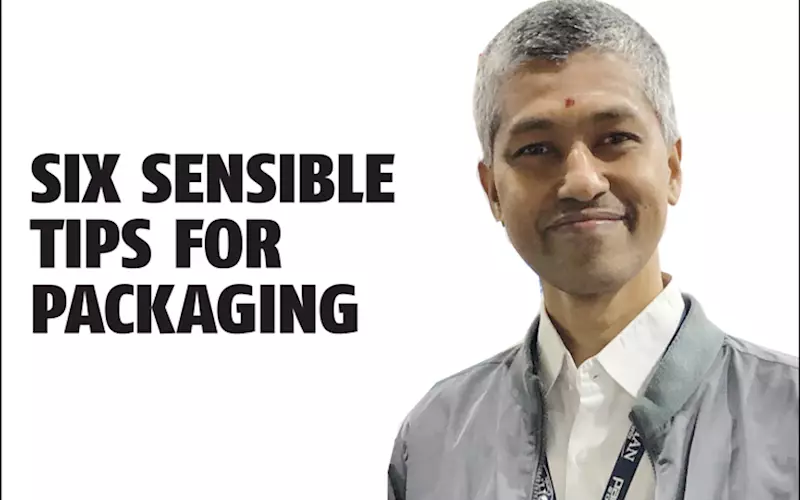Six sensible tips for packaging - The Noel D'Cunha Sunday Column
From improving the process, reducing the waste, being tech-aware with investments, V Vaidyalingam, director at Suba Solutions says the industry has been working quietly.
A Sunday Column in which Vaidy shares good news about how Indian factories are excelling
07 Jun 2020 | By Noel D'Cunha
A couple of years ago, I had a lucky meeting with KV Kamath, the renowned banker in an Indian restaurant in Shanghai. He was (and is) the chairman of the New Development Bank for BRICS countries that are headquartered in Shanghai. He explained, how in 10-15 years Shanghai had managed the huge municipal waste incredibly well. It is important for us to have tough environmental norms and goals and benefit by achieving the same in a time-bound manner.
1. Kumar Printers
At Suba Solutions, we had a session on the same urging our team members to adopt waste sorting even at their homes as part of their social responsibility. We speak to our customers on these issues and suggest them to make provisioning of capital to meet the pollution control norms of the packaging industry. At this point, it would be worthy to recollect that Kumar Printers in Manesar (Haryana) has a zero discharge printing press with a comprehensive ETP.
2. PR Packaging and Vijayshri
While setting up a plant if waste disposal and handling is thought through, it will bring in elements in layout and workflow that will enable handling waste efficiently.
I could recall the plants of PR Packaging in Palwal (Haryana) and Vijayshri in Indore (Madhya Pradesh) in the way they handle the waste.
Sorting of these wastes and bundling of the board waste into different category can fetch valuable revenue to an organisation.
3. Gupta Printers
We will need smart factories in India, optimisation inside the factory. Gupta Printers in Sivakasi (Tamil Nadu) is a good example. They had good customer bases which were ready to support them with orders. However their infrastructure - building and equipment - both were an issue.
Their building was a multi-level structure and a kind of built-as-the-need-arose structure. The workflow was an issue. It was full of bottlenecks. A classic situation of falling revenue streams while there was a demand for high investments.
After understanding their requirement and discussions with Suba, they wisely chose to invest in a few finishing equipment that would automate their whole production of packaging and accommodated the same in their existing premises. They decided to first to quickly ramp up their equipment in their existing space optimally thereby delivering packaging material to their customers. Had they gone for land, building and then equipment concept it would have taken much longer. Also, it might have been difficult for them to win back customers who they would have lost during that time.
It also cost them far lesser for a set of six machines in the finishing department but more importantly saved them valuable time by choosing to build later.
4. National Litho Press
Early in 1995, one of our customers, Sathyanarayana of National Litho Press, Vijayawada (Andhra Pradesh), encouraged me to enrol in a training program by Landmark Forum. It was a three-day programme that was handled by a single forum leader for a heterogeneous gathering of about 350 people. The mix was quite incredible with people from various walks of life, of different age groups from 19 to 70 years old, as diverse as a retired army veteran to a housewife, a young student to a seasoned professional.
The program enabled me to understand myself better. In the programme they taught me key life lessons. I owe my better life to that program.
It also enabled me to understand some important concepts like having an open mind, not judging others, to accept responsibility for any happening, being grateful etc.
I will call it the three best days of my life, thusfar.
5. The Suba way
One mistake I find in our industry, particularly in packaging, is that people do not take a product approach to manufacturing. They are dictated by the brand of equipment they own.
I have seen so many companies going under or struggling to make ends meet because of this approach. This is quite disheartening. While several examples come to my mind, a few are given below (and I do not want to give names for obvious reasons):
- A five-colour + coater brand new printing machine with IST UV with an auto flute laminator. But without an auto film laminator, auto die-cutter and advanced folder gluer.
- A company venturing into packaging printing with a printing machine without an inline coater, but adding an advanced die cutter and folder-gluer.
- A company having a top-end die-cutter complemented with an Indian folder gluer.
- MetPET printing, advanced die-cutter and folder-gluer without a metPET laminator.
The examples go on and on.
We find many companies do not want to make a one-shot investment on equipment, though they are aware that with a comprehensive investment their business goals would be fulfilled. This is one thing, I think could easily be avoided.
6. SJ Packaging
SJ Packaging, New Delhi has a very effective unit for its core customers in the footwear industry. It is about setting up your system in tune with your target market. Every company can focus on its core customer base and create the appropriate infrastructure.











 See All
See All